
The AI Revolution: Separating Hype from Reality
June 06, 2023
Blog Post

June 06, 2023
Blog Post
Sign up to our mailing list by filling in the form below.
If you have any questions or need more info, let's have a conversation. Schedule one here.
VIEW TL;DR;
This piece isn’t merely another AI-authored article about artificial intelligence, featuring the all-too-common plot twist, “this was written by an AI”, as its ending.
Not many people would have anticipated that 2023 would be the year of AI. Indeed, we’re not great at predictions. Yet, AI has arrived – and with numerous mega corporations investing heavily in it, it’s undeniably here to stay.
You’ve likely heard of ChatGPT, and if you haven’t been utilising it, you’re missing out. ChatGPT is a chatbot, which may initially sound like the irritating third pop-up you’ve had to close just to access an article’s content – but this time, it’s different.
Much like others, we were genuinely astonished by ChatGPT’s capabilities, and now we use it on a daily basis; we suggest you do the same. Before we delve into what AI can offer you today, let’s briefly recap some of the intriguing developments that have taken place recently.
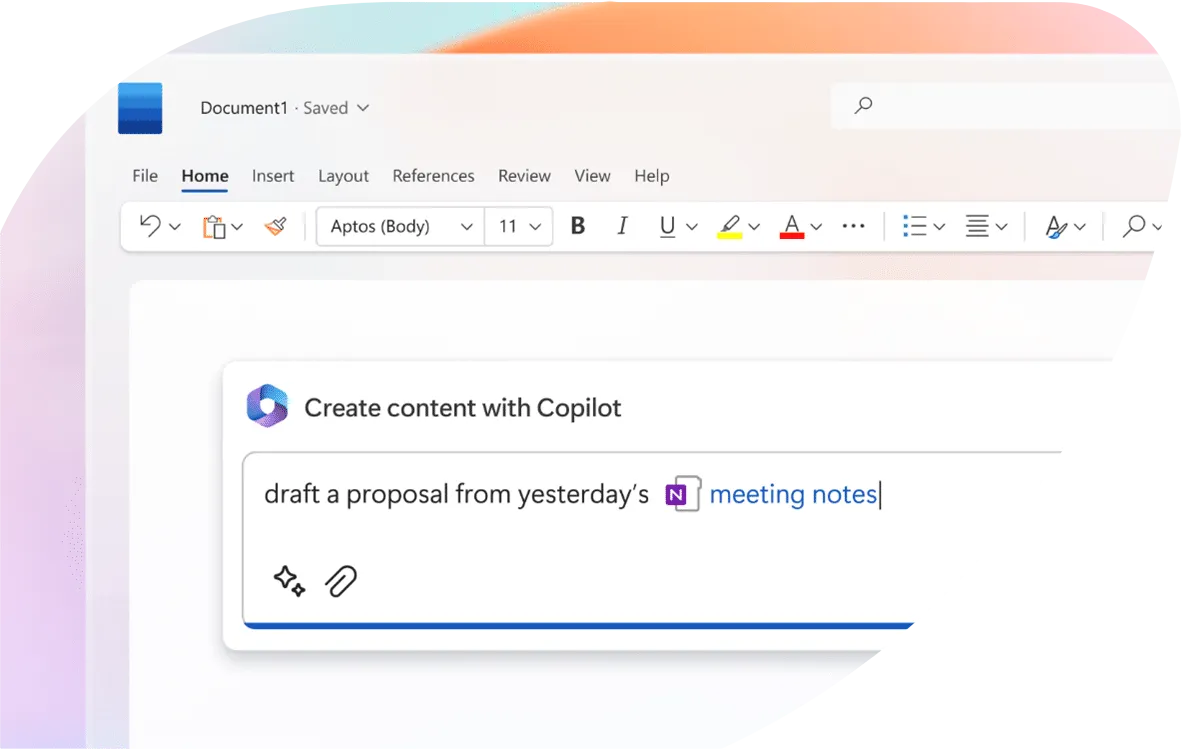
Both ChatGPT and Bard can now make use of tools and plugins. This allows the models to execute tasks that they are not designed for, such as implementing applications, creating CSV files, analysing data in Excel sheets and even manipulating images and video.
Starting with what ChatGPT is, it allows for text input (prompts) or image input (not yet available from the application), generating text output in response. At this point, you may be wondering, haven’t Siri, Google Assistant, and Alexa been performing similar tasks for years?
Technically yes, but not exactly.
So, here’s what traditional assistants cannot do, but GPT-4 can:
While this is an impressive list, you might be sceptical, suspecting it’s all over-hyped and that GPT-4 can’t actually perform these tasks effectively. So, let’s review a few examples.
I have quite the sweet tooth, so let’s start with a delightful poem about baking a cake. In this whimsical scenario, imagine that I need a cake recipe, yet I want it to be presented as a poem. I can effortlessly request it, just as I would from a friend or perhaps a baker-poet, if you will.
What’s interesting is that GPT manages to make up a cake recipe and also articulates it like a poem. This is just an example, but there are endless uses for this creativity that ChatGPT exhibits that can be applied to various scenarios, such as marketing.

Isn’t that remarkable?
In terms of examinations, GPT-3.5 was already achieving passing grades in most cases. Nevertheless, its scores were relatively modest compared to those of actual humans. Conversely, GPT-4 not only passes the lawyers bar exam but also ranks within the 90th percentile.
In the realm of reasoning, GPT-3.5 performed rather poorly. It struggled with even the most elementary queries, providing incorrect answers. However, when comparing it to GPT-4, the distinction is striking. Let’s consider a basic scenario.
When queried about the cooking time for 12 eggs in a pan that holds 8, with each egg needing 6 minutes, GPT-3.5 fluffs it up, assuming it’d take 36 minutes. In contrast, GPT-4 analyses the situation and delivers the correct answer.

A rather simple question, one that anyone should be able to answer. Yet, ChatGPT 3.5 gets it dreadfully wrong. However, if we pose the same question to GPT-4, the outcome is markedly different.

GPT-4 effortlessly reasons through the problem and delivers the correct solution. We’ve tested similar problems, and it has managed to solve all of them accurately.
One of the more fascinating aspects is the Theory of Mind. As defined by Wikipedia, the Theory of Mind is “a psychological concept referring to the ability to understand other people by attributing mental states to them.”
During an experiment conducted by Microsoft, in which they assessed GPT-4’s capabilities while integrating it into their products, they also examined its capacity for Theory of Mind.
GPT-4 successfully passed the classic Sally-Anne Theory of Mind test.
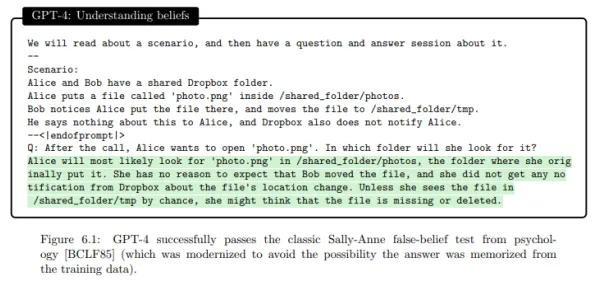
There are numerous tasks you might be undertaking that ChatGPT can certainly help with. Here are a few examples:
When composing anything, from an email to a blog post, ChatGPT can improve readability and rectify any mistakes, simply by asking it to “proofread the provided text”.
If you need someone to exchange ideas with, AI now has your back. Simply explain your thoughts, and it will come back with other views, and things you might be missing – it can now even browse the internet to gather even more relevant information.

ChatGPT serves as an excellent tool for learning new concepts. While you can, of course, search for information on Google, the advantage here is that if a concept is too complex, ChatGPT can provide simpler ways to explain the topic. You can even pose questions to it. Remember to fact-check what you learn as AI is known to make some facts up (known as hallucination) when it doesn’t know the answer!
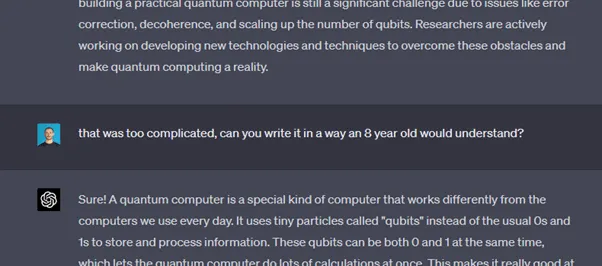
With an abundance of knowledge to acquire and countless engaging articles to peruse, no one has time to read it all. ChatGPT streamlines this process: simply paste the article into ChatGPT and request a summary. Plugins and browsing now also allows for ChatGPT to consume links, making it even easier to summarise certain content.
This May, ChatGPT made plugins and browsing available to anyone on their Plus plan. With these features, ChatGPT now has access to the internet, so it can gather information from the web. Plugins were also introduced, allowing features to be developed by third parties, leveraging the GPT model.
Although plugins and browsing are cool, the feature that everyone is waiting for is Code Interpreter. This has started to roll-out in alpha to a few individuals. Code Interpreter allows ChatGPT to run Python code. With this plugin, ChatGPT gains a wide array of capabilities, including analysing data from Excel sheets, listing insights and producing graphs, generating files, basic editing of videos and images, and a lot more.
AI tools are incredibly useful, but they also store information. It’s crucial to exercise caution when inputting data into such tools. Anything you input may be utilised for training purposes, or as with any tool, accidentally leaked. Therefore, ensure that you don’t input anything significant or confidential. Earlier this year, Samsung experienced three incidents in a brief period where employees inadvertently leaked sensitive code and meeting notes through ChatGPT usage.
ChatGPT now provides an option to disable History & Training from its user interface.
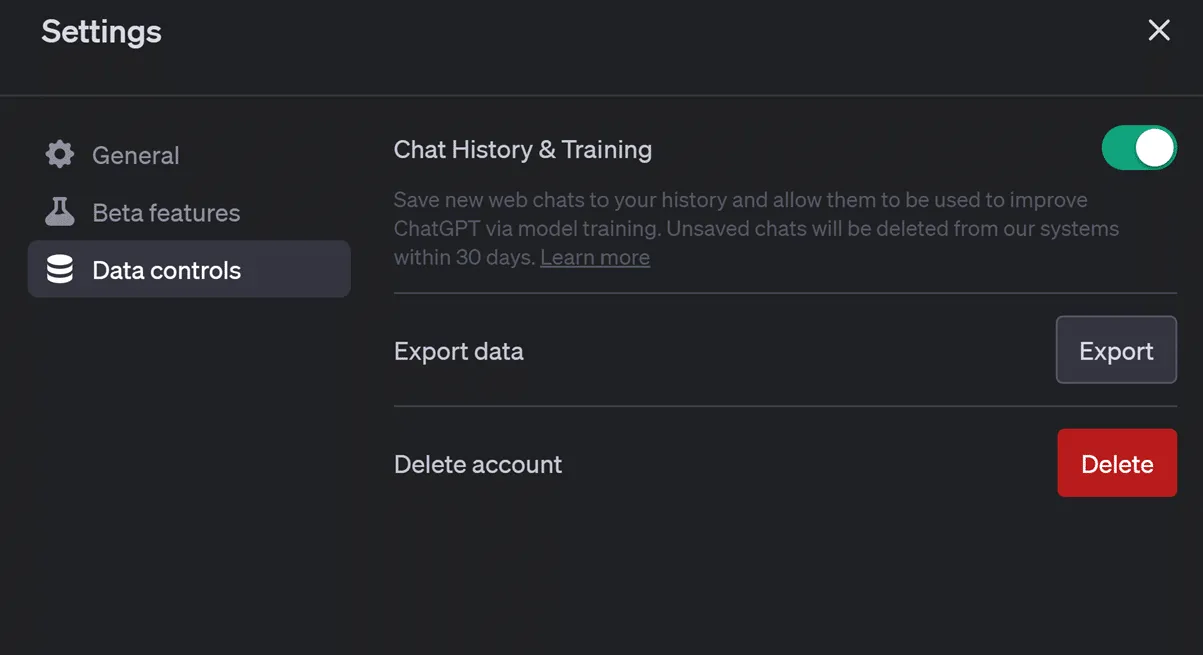
If you prefer to retain your history but don’t want your chat to be used for training, you can also complete this form. Even with history disabled or the form completed, be mindful that these tools can have bugs. As seen a few weeks ago, ChatGPT displayed history from other users and leaked some credit card details (last four digits).
However, it’s also important to note that Sam Altman, CEO at OpenAI, has recently said that they have changed their plans, and they won’t be training on user data.
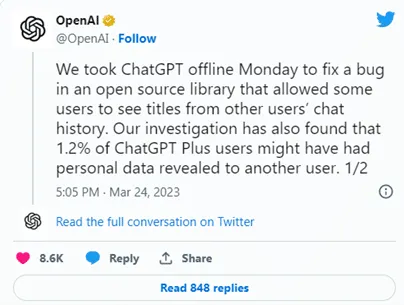
It’s very important to use these tools cautiously and avoid sharing sensitive information altogether.
The EU is proposing a regulatory framework for AI, which categorises AI usage into various risk levels and assigns obligations and regulations based on each level. Risks range from Unacceptable to Minimal, with High risk encompassing AI systems used in critical infrastructure, employment, and matters related to justice and democracy. High-risk uses will be subject to assessments, documentation, and minimum security, accuracy, and robustness requirements.
This legislation will likely bear similarities to GDPR.
In light of the current lenient regulations, companies are eagerly seizing the opportunity to gain a competitive edge.
In Sam Altman’s (OpenAI CEO) recent testimony, he urged for regulation and emphasized the need for control in the field.
So, given all the remarkable things AI can do, could it actually take your job?
What AI can do today is make you a lot more productive. Repetitive tasks, research or brainstorming, can (and should) all be expedited with AI.
The most significant challenge with AI today, however, is reliability. In the words of Ilya Sutskever, OpenAI’s Chief Scientist: “…I really don’t think it will be the case, but if I had to pick one … why things wouldn’t work out [taking over a large percentage of GDP], it would be reliability. The fact that you still have to look over the answers and double-check everything…”
The progress is truly impressive, and Large Language Models (LLMs) have accomplished more than most people anticipated. However, GPT-4 still has its limitations and cannot be fully trusted.
There are seemingly obvious mistakes that GPT-4 still makes, as pointed out in this Ted Talk. ChatGPT occasionally fumbles on simple reasoning questions that even a child could answer correctly. However, it’s worth acknowledging that the model’s performance significantly improves when presented with carefully crafted prompts, allowing it to correctly respond to a large number of reasoning queries.
Our understanding of AI systems continues to evolve as we probe the full extent of their constraints and potential. Often, these systems operate as somewhat of a “black box,” making their exact capabilities and limitations not readily apparent. Intriguingly, AI models can exhibit what are known as “emerging capabilities” – abilities they were not explicitly trained to perform, yet have acquired through the learning process. This aspect of unpredictability has triggered concern among many observers. Conversely, these models also possess unanticipated limitations that may not be obvious initially, and these too could lead to unintended, possibly detrimental outcomes. As such, our journey in understanding and navigating the potential of AI is marked by both exciting discoveries and cautionary lessons.
One example is the Theory of Mind – which we only tested on GPT-4, thinking that it might have emerged only recently. However, running tests on older models also yielded results, demonstrating that Theory of Mind had emerged earlier than we had realised. Another example is AlphaGo, an AI developed in 2016 to play the board game Go, which went on to defeat the highest-ranking human player. The AI seemed unbeatable until researchers uncovered a simple trick that triumphs over AlphaGo in most games, while proving ineffective against amateur Go players.
Many individuals have repetitive tasks that they carry out daily. These can range from simple actions like sending an email when an event occurs or filing documents based on specific rules, to more complex tasks such as reviewing documents for certain criteria or compiling data from multiple systems to generate reports.
These repetitive tasks are an excellent starting point, and we have several blog posts dedicated to business automation. Occasionally, tasks might be more intricate, with “fuzzy” rules or criteria that cannot be entirely defined. Examples include classifying images, automatically determining a document’s content, extracting relevant information from files, or responding to customers using natural language. In such cases, automation can greatly benefit from artificial intelligence.
Here are some examples:
In the insurance industry AI can help by streamlining and automating tasks like claims processing and fraud detection. By employing natural language processing and machine learning algorithms, AI can reduce manual data entry, assess damages more accurately, and identify suspicious claims.
In retail, managing inventory and predicting consumer demand are critical tasks. Traditionally, these tasks required manual tracking of stock levels and relied on employees’ experience and intuition to make informed decisions. AI can automate and enhance these processes, making them more efficient and accurate.
AI can analyze employee performance data and predict staffing needs based on factors like customer foot traffic, seasonal trends, and local events. This helps franchises create efficient work schedules, ensuring that the right number of employees are available during peak hours and reducing labour costs.
AI-powered chatbots and virtual assistants can handle a large volume of customer inquiries 24/7, providing immediate assistance and reducing wait times. They can answer frequently asked questions, help customers navigate websites or apps, and even assist with tasks like booking appointments or placing orders.
AI can also analyse incoming customer inquiries and route them to the most appropriate support agent based on factors like the agent’s expertise, current workload, and past performance. This can lead to faster resolution times and better customer experiences.
AI is not a panacea. At present, most tasks require some degree of human intervention, whether it’s to guide the AI, verify its output, or perform the majority of the work yourself with only some AI assistance.
However, it’s evident that in the near future, AI will play a role in most tasks – it’s not going away, so your business must adapt now. The tidal wave has just begun, and businesses are seeking to automate any process they can to gain an advantage over competitors. Companies like IBM have openly stated that they’re pausing hiring for certain roles, as they believe AI can sustain their growth.
Those who claimed that AI is merely hyped-up because of recent flashy chatbots that are nothing more than an auto-correct system, are unequivocally mistaken. AI is valuable for businesses, here for the long haul, and dismissing or downplaying its importance is a surefire path to failure.
We’ve been assisting companies in automating their processes through business automation and business intelligence, leveraging tools such as Microsoft’s Power Platform and Azure Cognitive Services.
Founded in 2016 and headquartered in Malta, Cleverbit Software is a prominent custom software development company, employing over 70 skilled professionals across Europe. Specialising in custom software for business efficiency, we cater to a diverse international clientele, including sectors in Malta, Luxembourg, Denmark, the United States, and the United Kingdom. Our commitment to delivering tailored, industry-specific software solutions makes us a trusted partner in driving business innovation and efficiency.
Would you like to discuss anything software?
Here's our email:
[email protected]
Here's our phone:
+356 2704 2495